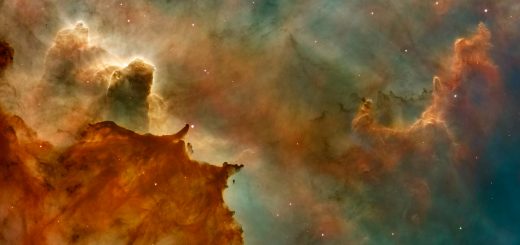Roman Mythology: Deities, Legends, and Imperial Sagas

Looking for more amazing products? Check out our online store and explore our collection here! Happy shopping!
Before diving in, please note: This post is for informational purposes only. If you’d like to know more about how we approach topics, feel free to check out our friendly Disclaimer Page.
Hey there, amazing readers! 
We’re committed to delivering quality posts, and your support (even just sticking around despite the ads) means everything to us. So, bear with us, and thanks for helping us keep the good vibes rolling. Now, on to the fun stuff!
TRANSLATE BUTTON AT THE END OF THE ARTICLE
Introduction to Roman Mythology
Roman mythology is a rich tapestry of stories, deities, and legends that have fascinated people for centuries.
Rooted in ancient Roman culture, mythology played a significant role in shaping the beliefs and values of the Roman people.
From tales of powerful gods and goddesses to epic sagas of love and betrayal, Roman mythology offers a glimpse into the spiritual and cultural life of the ancient Romans.
The Romans believed in a pantheon of gods and goddesses who ruled over various aspects of life and the universe.
These deities were often associated with specific virtues, symbols, and domains, and their stories were passed down through generations.
Roman mythology also drew inspiration from Greek mythology, adapting and incorporating many Greek deities into their own pantheon.
As we delve into the world of Roman mythology, we uncover a diverse and complex collection of stories that reflect the values, fears, and aspirations of the Roman people.
Through exploring these myths, we gain insight into the religious practices, rituals, and beliefs that shaped Roman society and continue to influence modern culture to this day.
The Pantheon of Roman Deities
The Roman pantheon consisted of a vast array of gods and goddesses, each with their unique powers, attributes, and stories.
Some of the most prominent deities included Jupiter, the king of the gods; Juno, his queen and goddess of marriage and childbirth; Minerva, the goddess of wisdom and warfare; and Neptune, the god of the sea.
In addition to these major deities, there were also lesser gods and goddesses who presided over specific aspects of nature, such as Ceres, the goddess of agriculture, and Bacchus, the god of wine and revelry.
These deities were worshipped through elaborate rituals and sacrifices, with temples and shrines dedicated to their honor scattered throughout the Roman Empire.
The Roman pantheon was a complex hierarchy of gods and goddesses, each playing a distinct role in the spiritual and cultural life of the ancient Romans.
The stories of these deities were intertwined with the daily lives of the Roman people, offering guidance, protection, and blessings to those who worshipped them.
Popular Legends in Roman Mythology
Roman mythology is filled with tales of heroism, tragedy, and divine intervention.
One of the most famous legends is that of Romulus and Remus, the twin brothers who were said to have founded the city of Rome.
According to the myth, they were raised by a she-wolf and went on to build the city that would become the center of the Roman Empire.
Another popular legend is the story of Aeneas, a Trojan hero who escaped the fall of Troy and journeyed to Italy, where he eventually founded the city of Alba Longa.
Aeneas’ descendants would go on to establish the city of Rome, tracing their lineage back to the gods themselves.
These myths and legends served not only as entertainment but also as a way to explain the origins of Rome and its people.
They reinforced the connections between the divine and the mortal realms, highlighting the importance of piety, honor, and duty in Roman society.
Stories of Love and Betrayal in Roman Myth
Love and betrayal are recurring themes in Roman mythology, often intertwined in tales of passion, jealousy, and tragedy.
One of the most famous love stories is that of Venus, the goddess of love, and Mars, the god of war.
Despite being married to Vulcan, the god of fire, Venus was drawn to Mars, leading to a scandalous affair that resulted in the birth of Cupid, the god of love.
Another poignant tale is that of Dido and Aeneas, whose doomed love affair was set against the backdrop of Aeneas’ quest to found Rome.
Dido, the queen of Carthage, fell deeply in love with Aeneas, but their relationship was ultimately doomed to failure, leading to Dido’s tragic demise.
These stories of love and betrayal served as cautionary tales, warning against the destructive power of passion and the consequences of straying from one’s duties and obligations.
They also showcased the human emotions and vulnerabilities of the gods and goddesses, illustrating that even the divine were not immune to the complexities of love.
The Rise of Imperial Sagas in Roman Mythology
With the expansion of the Roman Empire came a new era of mythology focused on the exploits of emperors and rulers.
Imperial sagas glorified the achievements and virtues of the Roman leaders, portraying them as divine or semi-divine figures who wielded immense power and influence.
One of the most famous imperial sagas is the story of Julius Caesar, whose assassination and deification elevated him to the status of a god.
Caesar’s adopted heir, Augustus, also became a central figure in Roman mythology, with tales of his victories, reforms, and divine mandate to rule.
The imperial sagas served to legitimize and reinforce the authority of the Roman emperors, presenting them as benevolent rulers chosen by the gods to lead and protect the people.
These stories were often used as propaganda tools to promote loyalty and obedience to the imperial regime, shaping the political and social landscape of the Roman Empire.
The Influence of Greek Mythology on Roman Deities
Greek mythology exerted a significant influence on Roman mythology, with many Greek deities being incorporated into the Roman pantheon under different names and attributes.
This process of syncretism resulted in a blending of Greek and Roman myths, creating a rich tapestry of stories that reflected the cultural exchange between the two civilizations.
For example, Zeus, the king of the Greek gods, was equated with Jupiter in Roman mythology, while Hera became Juno, Athena became Minerva, and Poseidon became Neptune.
These adaptations allowed the Romans to integrate Greek myths into their own religious practices, expanding the pantheon of deities and enriching their mythological traditions.
The influence of Greek mythology on Roman deities also extended to artistic and literary representations, with Roman poets and artists drawing inspiration from Greek myths to create their own works.
This fusion of cultural elements helped to shape the artistic and intellectual landscape of the Roman Empire, fostering a creative exchange that enriched both civilizations.
Roman Mythological Creatures and Monsters
Roman mythology is filled with a diverse array of creatures and monsters that inhabit the supernatural realms of the gods.
From the terrifying Medusa with her snake hair to the majestic Pegasus, a winged horse, these mythical beings added depth and complexity to the stories of the gods and heroes.
One of the most famous creatures in Roman mythology is the Cerberus, a three-headed dog that guards the entrance to the underworld.
Cerberus is said to prevent the souls of the dead from escaping and is a fearsome and formidable adversary in many myths and legends.
Other notable creatures include the Sirens, beautiful but deadly women who lured sailors to their doom with their enchanting songs, and the Chimera, a monstrous creature with the body of a lion, the head of a goat, and the tail of a serpent.
These creatures symbolized the dangers and challenges that heroes faced in their quests and adventures.
Symbolism and Meaning in Roman Mythology
Roman mythology is rich in symbolism and meaning, with each deity, legend, and ritual carrying layers of significance and interpretation.
Symbols such as the thunderbolt of Jupiter, the owl of Minerva, and the trident of Neptune were used to represent the powers and attributes of the gods, serving as visual cues for their worshippers.
Many myths and legends in Roman mythology also contained allegorical meanings, with characters and events symbolizing virtues, vices, and universal truths.
The story of Hercules, for example, is seen as a metaphor for the triumph of strength and courage over adversity, while the tale of Pandora’s box symbolizes the dangers of curiosity and temptation.
Rituals and practices in Roman mythology were imbued with symbolic significance, from offerings of food and drink to sacred animals and objects used in religious ceremonies.
These symbols reinforced the connection between the mortal and divine realms, creating a sense of continuity and harmony in the spiritual life of the ancient Romans.
Rituals and Practices in Roman Mythology
Rituals and practices were an essential part of Roman mythology, providing a framework for worship, communication with the gods, and the observance of sacred rites.
These rituals ranged from simple prayers and offerings to elaborate ceremonies and festivals dedicated to specific deities.
One of the most important rituals in Roman mythology was the sacrifice, where animals or other offerings were presented to the gods in exchange for their favor and protection.
These sacrifices were often conducted by priests and priestesses in designated temples and altars, with prayers and incantations accompanying the offerings.
Festivals and celebrations were also integral to Roman mythology, with events such as the Saturnalia, a winter festival honoring the god Saturn, and the Lupercalia, a fertility festival dedicated to Lupercus, the god of shepherds.
These festivals brought communities together, fostered social cohesion, and strengthened the bonds between the people and their deities.
Art and Literature Inspired by Roman Deities
Roman deities and myths have inspired countless works of art and literature throughout history, from epic poems and plays to sculptures and paintings.
Artists and writers have drawn on the rich tapestry of Roman mythology to create masterpieces that capture the beauty, drama, and mystery of the ancient tales.
One of the most famous works inspired by Roman mythology is Ovid’s Metamorphoses, a poetic masterpiece that weaves together myths of transformation, love, and divine intervention.
Ovid’s retelling of these stories has influenced generations of artists and writers, inspiring new interpretations and adaptations of the ancient myths.
In visual arts, Roman deities were often depicted in statues, mosaics, and frescoes that adorned temples, public buildings, and private residences.
These artistic representations captured the majesty and power of the gods, bringing them to life for worshippers and admirers alike.
Legacy of Roman Mythology in Modern Culture
The legacy of Roman mythology continues to resonate in modern culture, with references to the gods, legends, and symbols of ancient Rome appearing in literature, art, film, and popular culture.
The names of Roman deities such as Venus, Mars, and Mercury are still used today to represent love, war, and communication, respectively.
Roman myths and legends have also inspired countless retellings and adaptations in modern literature and media, from novels and plays to television shows and video games.
The enduring appeal of these stories lies in their timeless themes of love, power, and destiny, which continue to captivate audiences around the world.
Artists and designers frequently draw on the imagery and symbolism of Roman mythology in their work, creating contemporary interpretations that pay homage to the ancient tales.
From fashion to architecture, elements of Roman mythology can be seen woven into the fabric of modern society, connecting us to our cultural heritage and the enduring legacy of the ancient Romans.
Exploring the Depths of Roman Mythological Tales
Delving into the depths of Roman mythology reveals a world of complexity, beauty, and intrigue that continues to fascinate and inspire.
The stories of the gods, heroes, and creatures of ancient Rome offer a glimpse into the spiritual beliefs, cultural practices, and artistic traditions of a civilization that shaped the course of Western history.
By immersing ourselves in the myths and legends of Rome, we uncover a wealth of wisdom, symbolism, and meaning that transcends time and space.
These tales remind us of the enduring power of storytelling, the resilience of the human spirit, and the enduring legacy of a civilization that once ruled the known world.
Whether through art, literature, or scholarly inquiry, the exploration of Roman mythology offers a window into the past and a mirror to our own humanity.
As we unravel the mysteries of the ancient tales, we discover new insights, connections, and perspectives that enrich our understanding of the world and our place within it.
Conclusion
In conclusion, Roman mythology is a vast and intricate tapestry of deities, legends, and sagas that have shaped the cultural, spiritual, and artistic landscape of Western civilization.
From the pantheon of gods and goddesses to the stories of love and betrayal, Roman mythology offers a rich and diverse array of tales that continue to captivate and inspire audiences around the world.
As we delve deeper into the world of Roman mythology, we uncover a wealth of symbolism, meaning, and significance that transcends time and space.
The legacy of Roman myths lives on in modern culture, influencing literature, art, and popular media with its timeless themes of love, power, and destiny.
Exploring the depths of Roman mythological tales allows us to connect with the past, gain new perspectives on the present, and forge a deeper understanding of the human experience.
Through the stories of gods, heroes, and monsters, we find echoes of our own hopes, fears, and aspirations, reminding us of the enduring power of myth to illuminate the human soul.

The Enlightenment Journey is a remarkable collection of writings authored by a distinguished group of experts in the fields of spirituality, new age, and esoteric knowledge.
This anthology features a diverse assembly of well-experienced authors who bring their profound insights and credible perspectives to the forefront.
Each contributor possesses a wealth of knowledge and wisdom, making them authorities in their respective domains.
Together, they offer readers a transformative journey into the realms of spiritual growth, self-discovery, and esoteric enlightenment.
The Enlightenment Journey is a testament to the collective expertise of these luminaries, providing readers with a rich tapestry of ideas and information to illuminate their spiritual path.
Our Diverse Expertise
While our primary focus is on spirituality and esotericism, we are equally passionate about exploring a wide range of other topics and niches 

To ensure we provide the most accurate and valuable insights, we collaborate with trusted experts in their respective domains 
Our blog originally focused on spirituality and metaphysics, but we’ve since expanded to cover a wide range of niches. Don’t worry—we continue to publish a lot of articles on spirituality! Frequently visit our blog to explore our diverse content and stay tuned for more insightful reads.
Hey there, amazing reader! 
Check out our store here and take a peek at some of our featured products below! Thanks for being awesome!













